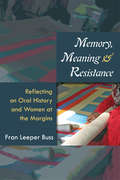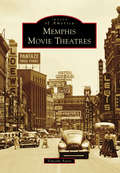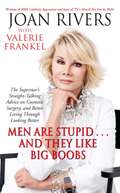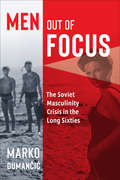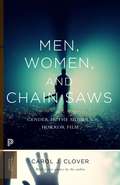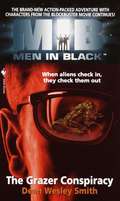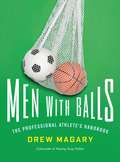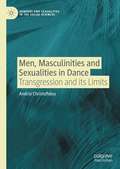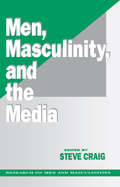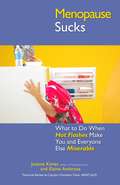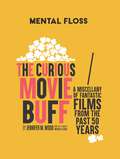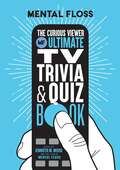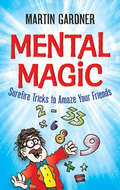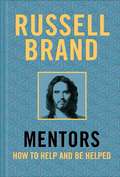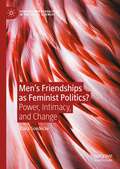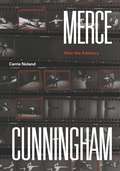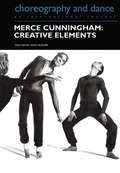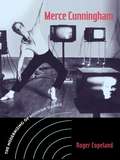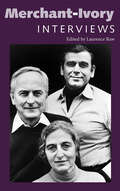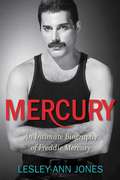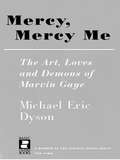- Table View
- List View
Memory, Meaning, and Resistance: Reflecting on Oral History and Women at the Margins
by Fran Leeper BussFran Leeper Buss, a former welfare recipient who earned a PhD in history and became a pioneer in the field of oral history, has for forty years dedicated herself to the goal of collecting the stories of marginal and working-class U.S. women. Memory, Meaning, and Resistance is based on over 100 oral histories gathered from women from a variety of racial, ethnic, and geographical backgrounds, including a traditional Mexican American midwife, a Latina poet and organizer for the United Farm Workers, and an African American union and freedom movement organizer. Buss now analyzes this body of work, identifying common themes in women’s lives and resistance that unite the oral histories she has gathered. From the beginning, her work has shed light on the inseparable, compounding effects of gender, race, ethnicity, and class on women’s lives—what is now commonly called intersectionality. Memory, Meaning, and Resistance is structured thematically, with each chapter analyzing a concept that runs through the oral histories, e.g., agency, activism, religion. The result is a testament to women’s individual and collective strength, and an invaluable guide for students and researchers, on how to effectively and sensitively conduct oral histories that observe, record, recount, and analyze women’s life stories.
Memphis Movie Theatres
by Vincent AstorMemphis has always been a theatrical town--a crossroads in the center of America for entertainment as well as commerce. Movies are among the many things that travel through the city, both for distribution and exhibition. Thousands of people who have lived here or just passed through, especially during and after World War II, found their way to the movie theatres. From the vaudeville palaces on Main Street to the nickelodeons on Beale Street, these theatres helped shape the culture of the city. Kemmons Wilson operated movie houses before he built the first Holiday Inn. Several movie theatres played roles in the life of Elvis Presley. W.C. Handy attended the opening of a theatre named for him. Local censorship practices influenced decisions in Hollywood, and the first multiplex in the region was built in Memphis.
Men Are Stupid . . . And They Like Big Boobs
by Joan Rivers Valerie FrankelRed-carpet fashion laureate, comic icon, and outspoken superstar Joan Rivers is uniquely qualified to talk about plastic surgery -- because she's one of the few celebrities unafraid to admit to the world what she's "had done" to keep looking so great. Now, in this no-holds-barred book, she gives women straight-talking advice on better living through looking better. Joan Rivers' abiding life philosophy is simple: in the appearance-centric society of the twenty-first century, beauty is key -- especially where men are concerned. Men like pretty women. And so, getting something lifted, tightened, adjusted, or removed is as fundamental as wearing makeup or using hair conditioner; it's become something we do to make ourselves look better. Now, for any woman considering her options, Joan Rivers takes the mystery out of cosmetic surgery with a practical overview, aided and informed by the country's top plastic surgeons, of almost every single cosmetic procedure legally performed in America today. She takes readers step-by-step through these entire processes, from fi nding the right doctor to the bruising truth about recovery and the facts about cosmetic surgery's very real risks. But don't worry -- there's dish, too. Filled with Rivers' personal anecdotes about life under the knife, Men Are Stupid...And They Like Big Boobs is also rife with Hollywood gossip about who's done what and how often. Part comic musing, part bitch-fest, and part hands-on advice, this is a bracingly funny, wildly frank, and genuinely passionate argument for a woman's right to do whatever it takes to be beautiful, to feel better about herself, and most of all to be happy -- not only with who she is, but who she wants to be. Throughout the book, Joan Rivers is right there, guiding and encouraging with no apologies, no excuses, and absolutely no shame. Take it from the woman who enjoys having it all -- done.
Men Out of Focus: The Soviet Masculinity Crisis in the Long Sixties
by Marko DumančićMen Out of Focus charts conversations and polemics about masculinity in Soviet cinema and popular media during the liberal period – often described as "The Thaw" – between the death of Stalin in 1953 and the invasion of Czechoslovakia in 1968. The book shows how the filmmakers of the long 1960s built stories around male protagonists who felt disoriented by a world that was becoming increasingly suburbanized, rebellious, consumerist, household-oriented, and scientifically complex. The dramatic tension of 1960s cinema revolved around the male protagonists’ inability to navigate the challenges of postwar life. Selling over three billion tickets annually, the Soviet film industry became a fault line of postwar cultural contestation. By examining both the discussions surrounding the period’s most controversial movies as well as the cultural context in which these debates happened, the book captures the official and popular reactions to the dizzying transformations of Soviet society after Stalin.
Men Women and Chain Saws: Gender in the Modern Horror Film
by Carol CloverInvestigating the popularity of the low-budget tradition, Carol Clover looks in particular at slasher, occult, and rape-revenge films. <P><P>Although such movies have been traditionally understood as offering only sadistic pleasures to their mostly male audiences, Clover demonstrates that they align spectators not with the male tormentor, but with the females tormented―notably the slasher movie's "final girls"―as they endure fear and degradation before rising to save themselves.
Men in Black: The Grazer Conspiracy
by Dean Wesley SmithThe truth may be out there--but sometimes it comes too close for comfort. That's when the men and women of a supersecret organization swing into action. Their job is to monitor the Earth for alien infestation--and send them back where they come from. Be warned: The less you know, the better. This is their story. The Grazer Conspiracy. The scum of the universe had been asked specially. Imagine being really, really mad. Imagine deciding to blow up the host of that party--in this case, Earth. Thousands of alien warships are massing above the planet right now for just that reason. Someone on Earth asked the Grazers--the most hated aliens in the galaxy--to dinner. As if the threat of annihilation wasn't enough for Agents Jay and Elle to deal with, the Grazers are big, dumb, and very hungry, and they're stripping the entire planet of grass and trees. But the worst is yet to come. For Jay and Elle are determined to find out who invited these alien parasites to Earth in the first place... and the trail leads straight to MiB. Who at MiB would want to betray the organization--and all of humankind? And even more troubling, why? This time the truth isn't out there someplace. It's so close that Jay and Elle may not see it until it's too late. And by then, Earth just might be one big, empty salad bar.
Men of Music: Their Lives, Times and Achievements
by Wallace Brockway Herbert WeinstockBiographies of Bach, Handel, von Gluck, Haydn, Mozart, Beethoven, von Weber, Rossini, Schubert, Mendelssohn, Schumann, Chopin, Berlioz, Liszt, Wagner, Verdi, Brahms, Tchaikovsky, Debussy, Strauss, Sibelius, and Stravinsky.
Men with Balls: The Professional Athlete's Handbook
by Drew MagaryBeing a professional athlete isn't easy. Sure, they have money, ice-sculpture busts of themselves, and free use of team whirlpool facilities for their extramarital liaisons. But they also have obnoxious fans, conniving groupies desperate to get pregnant, and hardass coaches. Luckily, Drew Magary has written MEN WITH BALLS, the first handbook specifically for professional athletes. It includes tips on how to: Recover from rookie hazing rituals like the "Broomstick Olympics"; Showboat using classical pantomime technique; Respond to Internet rumors about your sexual inadequacies. Featuring (made-up) advice from notable sports figures and scores of sophomoric yet informative illustrations, MEN WITH BALLS is essential reading for any athlete who wants to avoid prison, paying child support, or playing in Utah.
Men, Masculinities and Sexualities in Dance: Transgression and its Limits (Genders and Sexualities in the Social Sciences)
by Andria ChristofidouThis book examines men, masculinities and sexualities in Western theatrical dance, offering insights into the processes, actions and interactions that occur in dance institutions around gender-transgressive acts, and the factors that set limits to transgression. This text uses interview and observation data to analyze the conditions that encourage some boys and young men to become involved in this widely unconventional activity, and the ways through which they negotiate the gendered and sexual attachments of their professional identity. Most importantly, the book analyzes the opportunities male dancers find to develop a reflexive habitus, engage in gender transgressive acts and experiment with their sexuality. At the same time, it approaches gender and sexuality as embodied, and therefore as parts of identity that are not as easily amendable. This book will be of interest to scholars in Gender and Sexuality Studies as well as Dance and Performance Studies.
Men, Masculinity and the Media (Research on Men and Masculinities)
by Steve CraigAlthough studies of men and masculinity have gained momentum, little has been published that focuses on the media and their relationship to men as men. Men, Masculinity and the Media addresses this shortcoming. Scholars from across the social sciences investigate past media research on men and masculinity. They also examine how the media serve to construct masculinities, how men and their relationships have been depicted and how men respond to media images. From comic books and rock music to film and television, this groundbreaking volume scrutinizes the interrelationship among men, the media and masculinity.
Men, Women & Pianos
by Arthur LoesserSome of the greatest composers of history have confined some of their most precious thoughts to the piano. For a century and a half, series of pianists of outstanding nimbleness and expressive power have attracted millions of admirers to their performances. Mozart, Beethoven and Chopin, Liszt, Rubinstein and Rachmaninov, to achieve the fulfillment of their art, needed to have pianos. From where did they get them? From factories, of course. But piano factories cannot stay in business simply by making a few instruments for a few great musicians. They must sell their products annually by the hundreds, by the thousands, to all manner of persons: doctors, lawyers, merchants, government officials. What did those persons want with pianos? This book may supply some answers to this question." That is the modest raison d'être for his book given by the author in a letter to the publisher. But any reader will see at once that the proliferations in the answer to his question result in something much more important and delightful. What Mr. Loesser has written is really a piano's-eye view of the social--and sometimes the philosophical--history of Western Europe and the United States from the seventeenth century to the present, with glances both forward and back. With a keen eye for both the ridiculous and the significant detail (which turn out often to be the same thing), he traces the history of the design and manufacture of the piano, and the music written for it, from its predecessors, the clavichord and the virginal, to the latest concert grand and the modern "spinet." Long established as an internationally known concert pianist, Mr. Loesser here shows himself to be an elegant stylist and an impressively learned scholar, who has the wit to see that in a social history the role of the interior decorator may be quite as important as that of the virtuoso--and that of the ambitious parent, more important than either.
Men, Women and Pianos: A Social History
by Arthur LoesserA piano's-eye view of the social and philosophical history of Western Europe and the United States from the 17th century to the 1950s, with glances forward and back.
Menopause Sucks
by Carolyn Chambers Clark Joanne Kimes Elaine AmbroseDo they call menopause "the change" because . . . You have to change shirts three times a day-after you've sweat through them? You have to change addresses, just to avoid all that mail from the AARP? You have to change your diet to nothing but milk and broccoli-just to get your RDA of calcium? With hot flashes, mood swings, and night sweats (oh, my!), menopause might not be your favorite phase of life. However, bestselling author Joanne Kimes is here to provide relief as welcome as hand-held fans and sweat-free sheets. In her signature, no-holds-barred style, Kimes dishes on: Dealing with a rollercoaster of emotions Anecdotes, remedies, and gentle tips to help you cope with all the physical changes you're facing How to enjoy menopausal sex Menopause brings about a whirlwind of emotional and physical transformations. Menopause Sucks gives you all the info-and belly laughs-you need to cool down during this hot change of life. Joanne Kimeshas authored or coauthored ten Sucks titles and has written for a number of children's and comedy television shows.
Mental Floss: A Miscellany of Fantastic Films from the Past 50 Years
by Jennifer M. Wood Mental FlossCinephiles rejoice! From Mental Floss, an online destination for more than a billion curious minds since its founding in 2001, comes the ultimate book for movie lovers. The Curious Movie Buff is filled with fascinating facts and behind-the-scenes insights about the making of your favorite movies from the last 50 years. Every film fan will find something to love, with the team at Mental Floss profiling more than 60 films of the past half-century, from well-known blockbusters to critical favorites and cult classics. The highlighted titles span across various decades and genres and include iconic franchises like Star Wars and The Lord of the Rings, Oscar-winning classics like The Godfather and Titanic, rip-roaring comedies from Blazing Saddles and The Big Lebowski, indie hits like Reservoir Dogs and Paranormal Activity, and superhero favorites such as Superman and The Dark Knight. Throughout are quirky sidebars from the Mental Floss archives, such &“Marvel Cinematic Universe Movie Locations You Can Visit IRL,&” &“Remakes That Are Better than the Original Movie,&” The 25 Best Movie Endings of All Time,&” &“Summer &‘Blockbusters&’ That Completely Tanked at the Box Office,&” and &“The Best Movie Trailers Ever.&” TRIVIA ABOUT MORE THAN 60 MOVIES: Get the inside scoop, fascinating facts, and behind-the-scenes trivia on the greatest movies from the past 50 years, from serious dramas such as The Godfather to seriously funny comedies like The Big Lebowski FASCINATING AND INLayoutIVE LISTS: Learn about movie locations you can visit, what movies have the best endings, and which movies scraped the bottom of the barrel with Mental Floss&’s info-packed lists SOMETHING FOR EVERYONE: Whether you&’re in the mood for a classic, jonesing for a good Western, wondering what sci-fi films you&’ve missed, or just want to discover a new movie, the team at Mental Floss will steer you in the right direction THE PERFECT GIFT FOR MOVIE FANS: Mental Floss: The Curious Movie Buff is the ideal gift for the film enthusiasts in your life.
Mental Floss: The Curious Viewer Ultimate TV Trivia & Quiz Book
by Jennifer M. Wood Mental FlossImpress your friends, family, and coworkers with fascinating facts about favorite TV shows and test your own TV trivia knowledge with dozens of challenging and entertaining quizzes. Did you know... Succession relies on &“wealth consultants&” to ensure authenticity on how the richest of the rich live? A fan of The Office, after recalling the episode where Steve Carell&’s character arranges a (disastrous) CPR training session, successfully performed CPR on an unconscious stranger? Fraggle Rock was the first American TV series broadcast in Russia? Learn the stories behind these obscure TV tidbits and much more! With fun trivia, challenging quizzes, and log pages for your own lists, Mental Floss: The Curious Viewer Ultimate Quiz and Trivia Book will become as indispensable for your next binge-watch as your remote control. DOZENS OF FUN AND CHALLENGING QUIZZES: Test your TV knowledge with quizzes like "Two Degrees Of" your favorite celebrities, and "Match the Quote to the Simpsons Character" TRIVIA ABOUT MORE THAN 100 TV SHOWS: Get the inside scoop, fascinating facts, and mind-boggling trivia on the greatest shows from the past 20 years, from serious dramas such as Law and Order to seriously funny comedies like Ted Lasso MAKE IT YOUR OWN: Dozens of pages with fill-in lists, such as "Shows I Want to Binge" and "My Favorite TV Quotes" to "Shows I Started but Never Finished" and "My Favorite Shows of All Time."
Mental Magic: Surefire Tricks to Amaze Your Friends (Dover Children's Activity Books)
by Martin Gardner Jeff SinclairA barber in Chicago says he'd rather cut the hair of ten red-headed men than the hair of one brown-haired man. Can you guess why?Ask Professor Picanumba, a master of riddles who carries dozens of surefire tricks up his sleeve. He'll show you how to astonish your friends and family by predicting the answers to 88 word and number challenges. These tricks require only simple props--a deck of cards or a couple of pairs of dice, a calculator, and a pencil and paper. With or without an audience, these foolproof feats of mental magic offer hours of amusement. Solutions appear at the end, with 64 illustrations in between.Author Martin Gardner has written more than 70 books on subjects from science and math to poetry and religion. Well known for the mathematical games that appeared in Scientific American for decades and for his "Trick of the Month" column in Physics Teacher magazine, Gardner has had a lifelong passion for magic tricks and puzzles.
Mentors: How to Help and Be Helped
by Russell BrandRussell Brand explores the idea of mentoring and shares what he's learned from the guidance of his own helpers, heroes and mentors.Could happiness lie in helping others and being open to accepting help yourself? Mentors – the follow up to the New York Times bestseller Recovery – describes the benefits of seeking and offering help."I have mentors in every area of my life, as a comic, a dad, a recovering drug addict, a spiritual being and as a man who believes that we, as individuals and the great globe itself, are works in progress and that through a chain of mentorship we can improve individually and globally, together . . . One of the unexpected advantages my drug addiction granted is that the process of recovery that I practise includes a mentorship tradition. "I will encourage you to find mentors of your own and explain how you may better use the ones you already have. Furthermore, I will tell you about my experiences mentoring others and how invaluable that has been on my ongoing journey to self-acceptance and how it has helped me to transform from a bewildered and volatile vagabond to a (mostly) present and (usually) focussed husband and father."—Russell Brand Mentors: How to Help and Be Helped describes the impact that a series of significant people have had on the author – from the wayward youths he tried to emulate growing up in Essex, through the first ex-junkie sage, to the people he turns to today to help him be a better father. It explores how we all – consciously and unconsciously – choose guides, mentors and heroes throughout our lives and examines the new perspectives they can bring.
Menus for Movieland
by Richard AbelAt the turn of the past century, the main function of a newspaper was to offer "menus" by which readers could make sense of modern life and imagine how to order their daily lives. Among those menus in the mid-1910s were several that mediated the interests of movie manufacturers, distributors, exhibitors, and the rapidly expanding audience of fans. This writing about the movies arguably played a crucial role in the emergence of American popular film culture, negotiating among national, regional, and local interests to shape fans' ephemeral experience of moviegoing, their repeated encounters with the fantasy worlds of "movieland," and their attractions to certain stories and stars. Moreover, many of these weekend pages, daily columns, and film reviews were written and consumed by women, including one teenage girl who compiled a rare surviving set of scrapbooks. Based on extensive original research, Menus for Movieland substantially revises what moviegoing meant in the transition to what we now think of as Hollywood.
Men’s Friendships as Feminist Politics?: Power, Intimacy, and Change (Genders and Sexualities in the Social Sciences)
by Klara GoedeckeThis book discusses men’s friendships in relation to queer, discursive, and intersectional feminist theories. It analyses stories of intimacy, touch, hugs, and conversations, connecting these with current discussions within feminism and critical masculinity studies on “new” men, men’s political activism, and how friendships are lived and conceptualised in relation to heteronormative relationship ideals. Drawing on individual and dyadic interviews with middle-class Swedish men, all engaged in or sympathetic to feminist issues in some sense, this volume shows that Swedish gender equality ideologies as well as feminist, therapeutic, neo-liberal, and individualist discourses prevalent in the Western world structured the men’s friendships and their engagement with gender politics. Chapters cover friendship temporalities, gendered friendship ideals, friendship as men’s politics, and friendship as performed in interaction. Bridging the literatures of feminist research and friendship, the author points to tensions and contradictions in pro-feminist men’s political projects and in contemporary masculine positions.
Merce Cunningham: After the Arbitrary
by Carrie NolandOne of the most influential choreographers of the twentieth century, Merce Cunningham is known for introducing chance to dance. Far too often, however, accounts of Cunningham’s work have neglected its full scope, focusing on his collaborations with the visionary composer John Cage or insisting that randomness was the singular goal of his choreography. In this book, the first dedicated to the complete arc of Cunningham’s career, Carrie Noland brings new insight to this transformative artist’s philosophy and work, providing a fresh perspective on his artistic process while exploring aspects of his choreographic practice never studied before. Examining a rich and previously unseen archive that includes photographs, film footage, and unpublished writing by Cunningham, Noland counters prior understandings of Cunningham’s influential embrace of the unintended, demonstrating that Cunningham in fact set limits on the role chance played in his dances. Drawing on Cunningham’s written and performed work, Noland reveals that Cunningham introduced variables before the chance procedure was applied and later shaped and modified the chance results. Chapters explore his relation not only to Cage, but also Marcel Duchamp, Robert Rauschenberg, James Joyce, and Bill T. Jones. Ultimately, Noland shows that Cunningham approached movement as more than “movement in itself,” and that his work enacted archetypal human dramas. This remarkable book will forever change our appreciation of the choreographer’s work and legacy.
Merce Cunningham: Creative Elements (Choreography and Dance Studies Series #Vols. 4, Pts. 2.)
by Joan Acocella David Vaughan Gordon Mumma Thecla Schiphorst William Fetterman Elliot Caplan Marilyn Vaughan Drown John Holzaepfel Nelson RiveraMerce Cunningham reached the age of 75 in 1994, an age at which many creative artists are content to rest on their laurels, or at least to leave behind whatever controversies they may have caused during their careers. No so Cunningham. In the first place, his 70s have been a time of intense creativity in which he has choreographed as many as four new works a year. Cunningham is a strongly committed as ever to the discovery of new ways of moving and of making movement, refusing to be hampered by the physical limitations that have come with age. Since 1991 every new work has been made at least in part with the use of the computer program Life Forms, which enables him to devise choreographic phrases that he himself would be unable to perform - and which challenge and develop the virtuosity of the young dancers in his company.The essays collected in this special issue of Choreography and Dance were written over the last few years and discuss various aspects of the work of Cunningham as seen both from the outside and the inside.
Merce Cunningham: The Modernizing of Modern Dance
by Roger CopelandFirst Published in 2004. Routledge is an imprint of Taylor & Francis, an informa company.
Merchant-Ivory: Interviews (Conversations with Filmmakers Series)
by Laurence RawMerchant-Ivory: Interviews gathers together, for the first time, interviews made over a span of fifty years with director James Ivory (b. 1928), producer Ismail Merchant (1936–2005), and screenwriter Ruth Prawer Jhabvala (1927–2013). Beginning with their earliest work in India, and ending with James Ivory's last film, The City of Your Final Destination (2009), the book traces their career, while offering valuable insights into their creative filmmaking process. The volume serves as a corrective to the prevailing critical orthodoxy attached to Merchant-Ivory's work, which tends to regard them as being solely concerned with historically accurate costumes and settings. As independent filmmakers, they have developed an idiosyncratic approach that resists facile classification. Merchant-Ivory have insisted on maintaining their independence. More importantly, this book shows how Merchant-Ivory have always taken considerable care in casting their films, as well as treating actors with respect. This is a deliberate policy, designed to bring out one of the triumvirate's principal thematic concerns, running throughout their work—the impact of the “clash of cultures” on individuals. Partly this has been inspired by their collective experiences of living and working in different cultures. They do not offer any answers to this issue; rather they believe that their task is simply to raise awareness; to make filmgoers conscious of the importance of cultural sensitivities that assume paramount significance in any exchange, whether verbal or nonverbal.
Mercury: An Intimate Biography of Freddie Mercury
by Lesley-Ann JonesA REVEALING, INTIMATE LOOK AT THE MAN WHO WOULD BE QUEEN As lead vocalist for the iconic rock band Queen, Freddie Mercury's unmatched skills as a songwriter and his flamboyant showmanship made him a superstar and Queen a household name. But despite his worldwide fame, few people ever really glimpsed the man behind the glittering façade. Now, more than twenty years after his death, those closest to Mercury are finally opening up about this pivotal figure in rock 'n' roll. Based on more than a hundred interviews with key figures in his life, Mercury offers the definitive account of one man's legendary life in the spotlight and behind the scenes. Rock journalist Lesley-Ann Jones gained unprecedented access to Mercury's tribe, and she details Queen's slow but steady rise to fame and Mercury's descent into dangerous, pleasure-seeking excesses-- this was, after all, a man who once declared, "Darling, I'm doing everything with everyone." In her journey to understand Mercury, Jones traveled to London, Zanzibar, and India--talking with everyone from Mercury's closest friends to the sound engineer at Band Aid (who was responsible for making Queen even louder than the other bands) to second cousins halfway around the world. In the process, an intimate and complicated portrait emerges. Meticulously researched, sympathetic yet not sensational, Mercury offers an unvarnished look at the extreme highs and lows of life in the fast lane. At the heart of this story is a man . . . and the music he loved.
Mercy, Mercy Me: The Art, Loves and Demons of Marvin Gaye
by Michael Eric DysonThe best-selling Motown artist of all time, Marvin Gaye defined the hopes and shattered dreams of an entire generation. Twenty years after his tragic death-he was shot by his father-his relevance persists because of the indelible mark his outsized talent left on American culture. A transcendent performer whose career spanned the history of rhythm and blues, from doo-wop to the sultriest of soul music, Gaye's artistic scope and emotional range set the soundtrack for America's tumultuous coming of age in the 1970s. Michael Eric Dyson's searching narrative illuminates Marvin Gaye's stellar ascendance-from a black church in Washington, D. C. , to the artistic peak of What's Going On?-and charts his sobering personal decline. Dyson draws from interviews with those closest to Gaye to paint an intimate portrait of the tensions and themes that shaped contemporary urban America: racism, drug abuse, economic adversity, and the long legacy of hardship. Gaye's stormy relationships with women, including duet partner Tammi Terrell and wives Anna Gordy and Janis Hunter, are examined in light of the sexual revolution of the 1960s and 1970s. Dyson also considers family violence in the larger context of the African-American life and how that heartbreaking legacy resulted in Gaye's murder. Mercy, Mercy, Me is an unforgettable portrait of a beloved black genius whose art is reflected in the dynamism of contemporary urban America.
